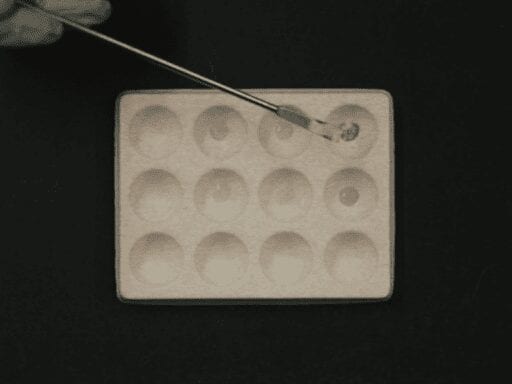In the four-episode series, two drug testers go off the rails — and more than 47,000 criminal cases they were involved in get vacated.
Perhaps the biggest problem with human systems of criminal justice — police, lawyers, judges, defendants, juries, prisons — is that they rely on humans to work, and humanity is a mess. We lie and steal and cheat; we have good intentions that end up harming people we intended to help; we harbor prejudices we’re not aware of; we make bad judgments and miscalculations.
Most thinking people are aware of this. Journalists and historians have thoroughly explored places where the American system fails. And a host of groundbreaking documentaries have unearthed the cracks as well, from 13th to The Central Park Five to The Thin Blue Line and many more.
But the one piece of the process that feels as if it should be largely immune to human error is science. Forensics, DNA evidence, drug testing — all of those seem as if, in contrast to humans, they ought to be impartial, giving information that isn’t swayed by personal interest or appeals to emotion or prejudices.
Yet, of course, scientific tests and examinations are administered and conducted by humans. So they’re just as capable of being a weak link in the chain of justice as any judge, juror, witness, or attorney.
That’s what How to Fix a Drug Scandal most successfully demonstrates. In four one-hour episodes, director Erin Lee Carr explores the case of Sonja Farak, a chemist at the state drug lab in Amherst, Massachusetts. Farak was arrested in January 2013 for stealing drugs from her workplace, where she tested evidence collected in drug cases, often serving as an expert witness in court. It emerged that she had begun using meth, amphetamines, LSD, and other drugs while at work, skimming them from the controlled substances used for testing and, eventually, from the evidence itself. Eventually she started stealing cocaine to manufacture crack, which she would then smoke at work.
/cdn.vox-cdn.com/uploads/chorus_asset/file/19862775/HowtoFixaDrugScandal_LimitedSeries_Episode1_00_20_41_05.png)
Carr weaves Farak’s story into that of another Massachusetts chemist, Annie Dookhan, who worked across the state at the Hinton drug lab in Boston. As Farak’s case was being investigated, Dookhan was in court for, and eventually convicted of, tampering with evidence in many cases as well. She also was tried for lying about aspects of her work history and claiming to have tested evidence that she did not actually test.
Dookhan directly manipulated or swayed the results of tests. Farak’s drug use almost certainly impacted the accuracy of her work. Though Farak and Dookhan’s actions were different, both meddled with evidence in a way that undermined the cases of people convicted of drug-related offenses, many of whom were serving time. Both were found guilty.
And their convictions led to a staggering number of previously decided drug cases in which one of them was involved being overturned — more than 47,000 in all.
How to Fix a Drug Scandal is unfocused but still important
How to Fix a Drug Scandal explores Farak’s and Dookhan’s cases, as well as the nearly unbelievable lack of administrative oversight and, later, cover-ups from district attorneys’ offices that made it possible. (Why, as someone points out, would you not regularly administer drug tests to people who work around drugs every day?)
How to Fix a Drug Scandal is frustrating to watch for those reasons alone. The idea that so many people are convicted of crimes they may not have even committed — or on the basis of shoddy, untested evidence — is infuriating.
Unfortunately, it’s also frustrating to watch the series because of how the story is told. As in a number of Netflix docuseries, the thesis of How to Fix a Drug Scandal isn’t clearly presented early on, which means you’re often left with the feeling of trying to absorb a lot of narrative, information, and evidence, but not sure how it’s supposed to relate to the rest of the story, or what point it’s driving toward. That method works better in a film, which is one coherent story told in a shorter time frame, enabling viewers to create links in their minds between bits of evidence.
In a longer, more episodic structure, some pieces of the story risk getting lost beneath the avalanche of information. And yet, oddly, some information is repeated so much that it starts to feel as if a feature-length film got stretched out artificially to fill four episodes. (Yes, we know this was a very serious problem — we don’t need dozens of people to tell us that in differently ordered words.)
And the choice to frame the series around Farak’s case, rather than Dookhan’s, feels structurally shaky. Farak’s addiction, and attempts to cover up the evidence of its years-long duration and effects on her work, is certainly a massive issue. But Dookhan’s intentional choices to falsify her work for personal gain and to lie about her education and life seem even more egregious, yet she takes second billing in the series. Reorienting the series to more evenly balance the two, or start with Dookhan’s story, would have given the episodes more narrative drive.
Yet Carr’s thoroughness is unassailable. And the chorus of voices, including journalists, attorneys, and officials involved in the case, makes it obvious that when the justice system breaks down, it’s because many small parts stop functioning. It’s never just the fault of one person. How to Fix a Drug Scandal shows how a state tried to “fix” its drug scandals, and makes the strong argument that no part of the justice system is untouched by humans’ capacity to screw things up.
How to Fix a Drug Scandal is streaming on Netflix.
Author: Alissa Wilkinson
Read More



